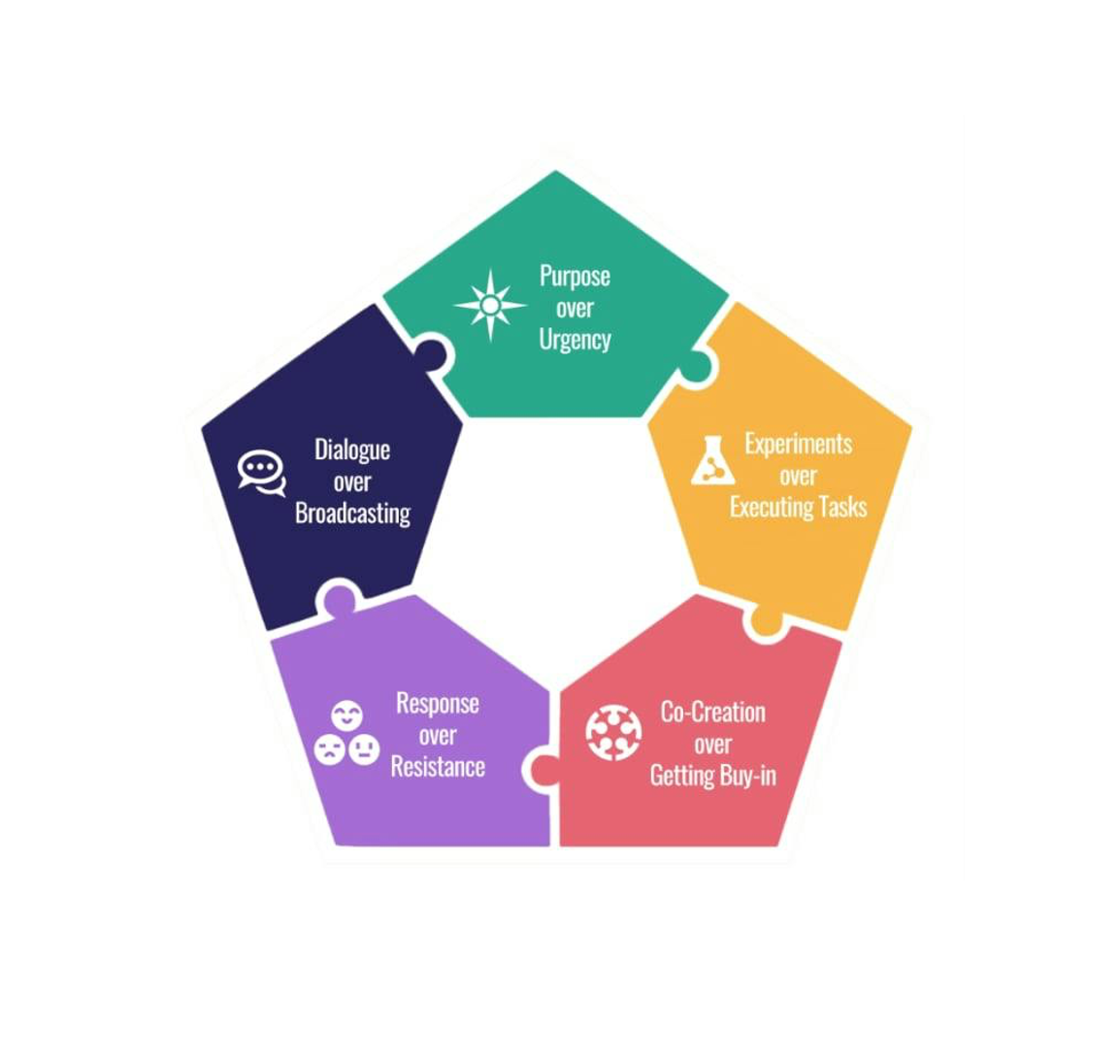What is Lean Change?
Lean Change is an innovative approach to managing organisational change that combines principles from Agile, Lean Startup, and Design Thinking. Inspired by Jason Little's 2014 book Lean Change Management: Innovative Practices for Managing Organizational Change, this approach challenges traditional change management methods by prioritising collaboration, experimentation, and adaptability.
At its core, Lean Change is about co-creating change with the people it affects, rather than imposing plans from the top down. It emphasises continuous feedback, allowing organisations to adapt their strategies based on real-time insights rather than rigid, long-term roadmaps. The process encourages small, incremental experiments that provide quick wins while mitigating risks.
The ideas are crystallised in the Five Universals of Change. Used together, these help create a more inclusive, adaptive and ultimately more effective change process.
1. Aligning people around a common purpose
2. Fostering meaningful dialogue
3. Responding to change constructively
4. Co-creating solutions
5. Encouraging experimentation

The Five Universals of Change, developed by Jason Little.
Instead of viewing change as a linear process, Lean Change embraces a cycle of insights, options, and experiments. Insights are gathered from stakeholders to understand the current state. Options are then co-created to explore possibilities for improvement. Finally, experiments test those ideas in practice, learning and iterating as you go.
Lean Change isn't just a methodology—it’s a mindset. It enables organisations to navigate complexity by fostering collaboration and responsiveness. As change practitioners, we can use these principles to build dynamic change communities that thrive on adaptability and shared ownership.
What’s your experience with Lean Change? I’m interested to hear your ideas, thoughts, and comments. Especially if they are negative, as these are often the most fruitful.


